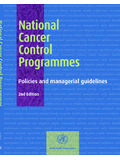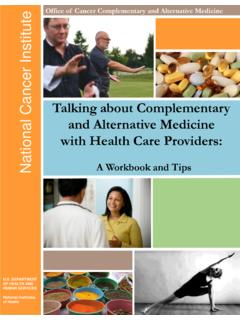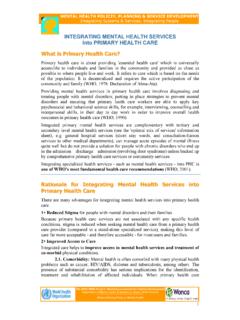Transcription of A Call to Revolutionize Chronic Pain Care in America: An ...
1 A Call to Revolutionize Chronic Pain care in America: An Opportunity in health care Reform November 4, 2009 *Amended March 4, 2010 1 The Mayday Fund, a family foundation dedicated to reducing human suffering caused by pain, convened a special committee to explore issues related to pain and the practice of medicine. The panel of adult and pediatric pain experts, which included anesthesiologists, neurologists, primary care doctors, emergency physicians, nurses, pharmacists, psychologists, and patient advocates, deliberated at a one-day meeting held in Washington, in June, 2009. This report is the outcome of that meeting. 2 The Background Chronic pain commonly defined as pain persisting longer than six months affects an estimated 70 million Americansi and is a tragically overlooked public health problem. The burden of Chronic pain is greater than that of diabetes, heart disease and cancer , iii Ongoing pain can also undermine overall physical, psychological, and social well-being, and is a major cause of disability and costly health care utilization.
2 Poorly assessed, unrelieved Chronic pain can rob individuals and family members of a high-quality life, and it profoundly burdens society as a whole. A 1998 National Institutes of health (NIH) report concluded that just the economic toll of Chronic pain may be estimated at $100 billion a year in the United It has increased significantly since then. Most people in pain, including those with Chronic symptoms, go to primary care providers to get relief. But current systems of care do not adequately train or support internists, family physicians and pediatricians, the other health care providers who provide primary care in meeting the challenge of treating pain as a Chronic illness. Primary care providers often receive little training in the assessment and treatment of complex Chronic pain They tend to work under conditions that permit little time with each patient and few options for specialist referrals.
3 It is an unusual patient who has access to coordinated interdisciplinary therapy for ongoing pain symptoms. Instead of receiving effective relief, patients with persistent pain often find themselves in an endless cycle, seeing multiple health care providers, including many specialists in areas other than pain, who are not prepared to respond effectively. They often endure repeated tests and inadequate or unproven treatments. This may include unnecessary surgeries, injections or procedures that have no long-term impact on comfort and function. Patients with Chronic pain have more hospital admissions, longer hospital stays, and unnecessary trips to the emergency department. Such inefficient and even wasteful treatment for pain is contributing to the rapid rise in health care costs in the United Adults aren t the only ones who suffer.
4 An estimated 20 percent of children experience Chronic pain and millions do not receive effective pain relief. Children in pain often bounce from doctor to doctor. If they do not get the appropriate treatment they are at risk of developing a pain condition that might remain into PERSISTENT PAIN: A Chronic ILLNESS Acute pain usually goes away after an injury or illness resolves. But when pain persists for months or even years, long after whatever started the pain has gone or because the injury continues, it becomes a Chronic condition and illness in its own right. This Chronic illness of pain, if inadequately treated, can impede the lives of individuals and families and produce a huge burden in health care over-utilization, lost work productivity and rising costs of pain-related disability. Prompt effective treatment of acute pain is critical. If pain becomes persistent, it must be effectively managed as a Chronic illness not only to limit long-term human suffering but also to prevent lost productivity within our society.
5 3 Ideally, all patients with pain should obtain an appropriate assessment followed by a plan of care that reflects best practices, to prevent the adverse effects of that pain both in the short term and over time. Patients with Chronic pain should receive a model of care that matches their need, is safe, appropriate, cost-effective, and guided by scientific evidence. They should also have access to a comprehensive approach, with a referral to pain specialists, when necessary. Acute pain that is not adequately managed can become Chronic pain,viii leading to long-term disability, complications and costs. For example, about one-third of people in pain report that their pain is disabling and has a high impact on their ability to function in daily Research suggests that the high cost of under-treated pain includes lost productivity. Pain is the second-leading cause of medically-related work absenteeism, resulting in more than 50 million lost workdays each To address this public health problem, the Mayday Fund, a family foundation dedicated to reducing human suffering caused by pain, convened a special committee to explore issues related to pain and the practice of medicine.
6 The panel of adult and pediatric pain experts, which included anesthesiologists, neurologists, primary care doctors, emergency physicians, nurses, pharmacists, psychologists, and patient advocates, deliberated at a one-day meeting held in Washington, in June, 2009. This report is the outcome of that meeting and subsequent deliberations over the course of several months. MILLIONS OF CHILDREN SUFFER FROM Chronic PAIN Chronic pain is a significant problem for children as well as for adults. In fact, studies suggest that Chronic pain may affect 20 percent of all children. Common causes of ongoing pain in children include headaches, stomach pain, musculoskeletal pain, arthritis, sickle cell crisis, and cancer. Some barriers to effective pain relief in the pediatric population include the fact that children may not communicate pain in the same way that adults do and thus pain symptoms might be ignored. In some cases, health professionals do not have enough training to prescribe medications or techniques to soothe a child in pain.
7 There is also research suggesting that untreated pain can put children at risk of developing Chronic pain or anxiety later in life. For example, most children receive 24 immunizations before their second birthday, yet much of the time their pain is ignored or discounted. Such pain, although brief, can be very intense and can lead to long-lasting anxiety. Infants who undergo circumcision without an analgesic have been shown to demonstrate more pain during subsequent routine immunizations than children who were not circumcised. Some facts on pediatric pain: Each year million children undergo a surgical procedure and many do not receive adequate pain relief.* Some 20 percent of children ages 5 to 17 suffer from ongoing headaches.* Juvenile arthritis, a painful disease of the joints, affects nearly 250,000 children under the age of 16.* By the year 2010, 1 in 1,000 children in the USA will be a cancer survivor and might be dealing with an ongoing pain problem.
8 * Source: American Academy of Pediatrics and the *American Pain Foundation The Pain Committee s Findings Chronic pain treatment needs major reforms to enhance assessment, increase access to the right care , improve quality and equitable care , and cut costs. Initiatives to address the huge public health problem of unrelieved Chronic pain should be part of any discussion on reforming the health care system to enhance access and reduce costs. The Secretary of the Department of health and Human Services (HHS), Kathleen Sebelius, has said that the current health care system both under-treats and fails to prevent Chronic conditions, a flaw that has contributed to spiraling medical costs. She said that better prevention and treatment of such conditions would save the nation money by preventing costly Historically, the health care system has failed to recognize Chronic pain as a legitimate condition.
9 However, it is clear that persistent pain is a complex illness that has many causes and affects every part of life, and in the process, exacts enormous social costs. And unfortunately, like many other Chronic illnesses, Chronic pain is associated with disparities based upon race, ethnicity, age, gender, and class. This pain as Chronic illness paradigm must inform the health care dialogue. Providers must recognize that acute pain needs prompt treatment as a measure to prevent the Chronic And Chronic pain, if it occurs, must be assessed and managed according to best practice, with the goal of providing comfort, improved functioning, equitable care , and a better quality of life for all people with Chronic pain. Chronic pain must be addressed similarly to other Chronic conditions. When the symptoms and their impact are not severe, the best practice should involve a primary care provider with the skills to evaluate the cause and the nature of the pain, and to implement a plan of care .
10 But in severe cases, the best practice may involve a group of interdisciplinary professionals, whose care is coordinated in a way that addresses all facets of the illness and prevents complications. To manage Chronic pain successfully, patients need a comprehensive assessment and, when appropriate, access to a pain specialist. Chronic pain patients might also need a team approach, one that includes physicians, nurses, mental health professionals, physical and occupational therapists, pharmacists, and other health care providers. Individuals with Chronic pain often need a combination of multiple daily medications, and sometimes opioids (st rong pain medications), psychological, behavioral and social interventions, rehabilitation therapy, and complementary Because of the level of pain, some patients should also be offered more interventions, such as injection therapies, nerve blocks, or trials of implanted therapies.





